Underrated USA: 8 Cities Making a Comeback
Often overlooked in favor of San Francisco or New York, these eight cities are coming into their own, with newly vibrant centers, revitalized architecture, and plenty of local flavor.
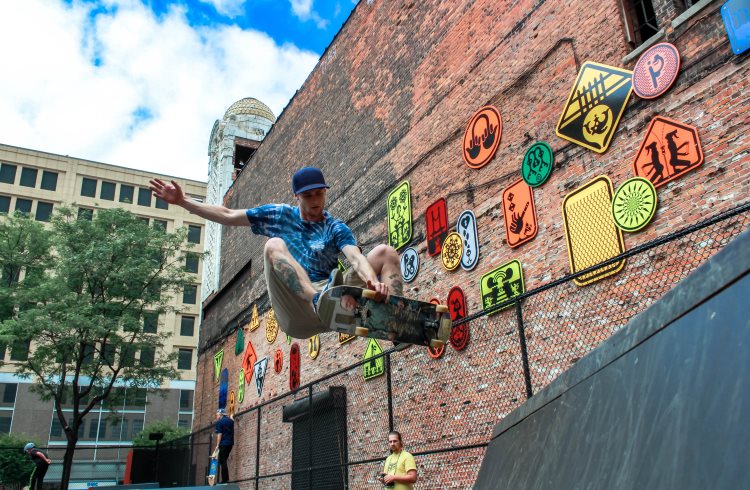 Photo © Brandon Zack / unsplash
Photo © Brandon Zack / unsplash
- Oakland: History and diversity on the Bay
- Detroit: Motown's recovery and renewal
- Buffalo: Recreation on the waterfront
- Birmingham: Food, music, and magic
- Los Angeles: A cutting-edge art scene
- Providence: Walkable and affordable
- Oklahoma City: From blighted to hip
- Pittsburgh: "Steel City" reborn
Oakland, California: History and diversity on the Bay
Oakland finally got its share of the spotlight in 2018. This city of around 420,000, perpetually in the shadows of its more famous neighbor across the Bay (San Francisco), was featured in three films that year: Black Panther, the third highest-grossing movie in U.S. history and directed by Oakland native Ryan Coogler, and two indie films that made some critics’ best-of-the-year lists, Sorry To Bother You and Blindspotting.
All three films are a testament to the special place Oakland occupies in the realm of Black history and culture. Nonetheless, it’s also one of the most diverse cities in the country, home to large Latino and Asian populations and some of the best Mexican, Salvadoran, and Vietnamese food around. In fact, Oakland now rivals San Francisco as a foodie destination. Oakland’s mild weather allows for both year-round events like First Fridays – a family-friendly event that includes local artists, musicians, and food trucks – and annual events like the Art + Soul Festival, which draws big-name R&B and jazz artists.
Perhaps Oakland’s most underrated feature is its geographic diversity and natural beauty, from the centrally located Lake Merritt – popular with runners, walkers, and families – to the sweeping bay views of the Oakland Hills. Visitors might be surprised to learn about the opportunities for hiking and picnicking at Joaquin Miller Park, Redwood Regional Park, or Lake Temescal. In short, far from the “urban war zone” stereotype that has long plagued the city, Oakland is a vibrant, economically and ethnically diverse city that has a ton to offer.
I currently call Oakland home, and though I’m a San Francisco native, I doubt I’d move back across the Bay, even if I could afford it. I prefer Oakland’s laid-back vibe, lack of pretentiousness, and welcoming attitude toward families. - Rebecca Bodenheimer
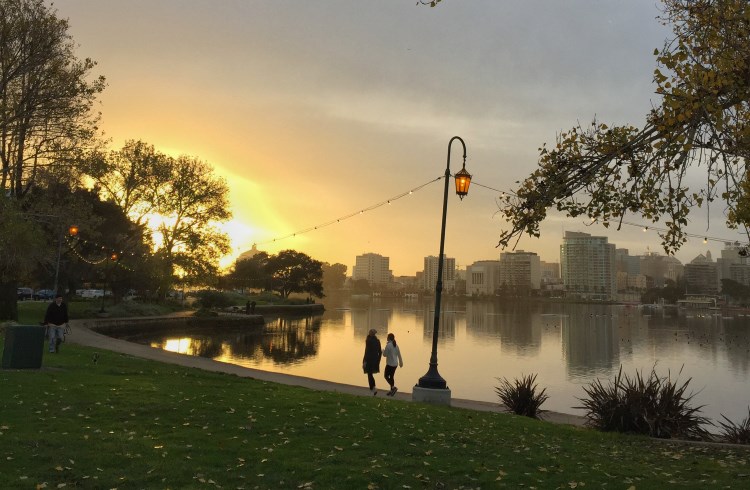
Detroit, Michigan: Motown's recovery and renewal
Underneath me, pavement crumbles into potholes. Rising up from that, though, a mural proclaims Nothing Stops Detroit. This is the city that filed for bankruptcy six years ago – the largest municipal bankruptcy in US history. Once nicknamed Motown, Motor City, and Paris of the Midwest, Detroit is making a new name for itself: Comeback City.
Detroit shares its residents’ spirit – proud, unapologetic, resilient, innovative, diverse. But even though it’s resurging, Detroit’s various neighborhoods aren’t recovering at equal rates, which contributes to increasing inequality. Where there is a Detroiter, though, there is a solution.
Take the Heidelberg Project, Tyree Guyton’s street-long outdoor art installation just north of the Black Bottom neighborhood. On a rainy-day visit, Guyton’s sister tells me “he saw what was happening to other neighborhoods… he just wanted to make our community a beautiful place.” Others share the same vision. In Highland Park, social enterprise Antique Touring offers tours in vintage Ford Model As. And in Corktown looms the abandoned Michigan Central Station, which the Ford Motor Company recently invested US $740 million in to restore. The 105-year-old train station will soon house local shops and a research center on self-driving vehicles.
Deeper in Detroit is Hamtramck, an enclosed two-square-mile city, where women in hijab browse through Polish grocery stores. Originally an enclave for Polish immigrants, Hamtramck is now the first US city with a majority Muslim population and city council. Some call Hamtramck a refuge, and if that’s so, then it’s Detroit that’s offering refuge.
Has Detroit made its comeback? Not quite yet. But that’s precisely why it’s important to visit. Travelers can not only witness Detroit’s renaissance, but play an active role in it. - Sarah Bence

Buffalo, New York: Recreation on the waterfront
In the 19th century, Buffalo was one of the wealthiest cities in the United States. It was a powerhouse of early industry because of its location on the Erie Canal, between the Great Lakes, and near Niagara Falls. Its fortunes changed in the mid-20th century, when much industry moved elsewhere and the city lost more than half its population. But, it never lost its mansions, Art Deco City Hall, Frank Lloyd Wright-designed buildings, ornate Queen Anne-style homes, or proximity to Niagara Falls.
All of these are great reasons to go and check out Buffalo. Plus, in recent years the waterfront areas and ex-industrial apparatus, like enormous grain silos, have been developed and turned into recreational areas for residents and visitors. Investment is trickling back in and once-neglected places – often hiding architectural gems – are being revived.
I lived in Buffalo for a year and a half, and explored the city with the insider-outsider perspective of a resident and a tourist. Although the winter is a time for hibernation – the snow can be so deep it’s actually funny – I got outside to ice skate at Canalside and try cross-country skiing. But Buffalo really comes alive in the summer, as if nature is rewarding Buffalonians for enduring the winter. There are street festivals in Elmwood and Allentown, weekly craft markets, food truck Tuesdays at Larkin Square, free concerts at Canalside (with some really big-name acts), and opportunities to kayak and sail on the river, canal, and Lake Erie. - Elen Turner
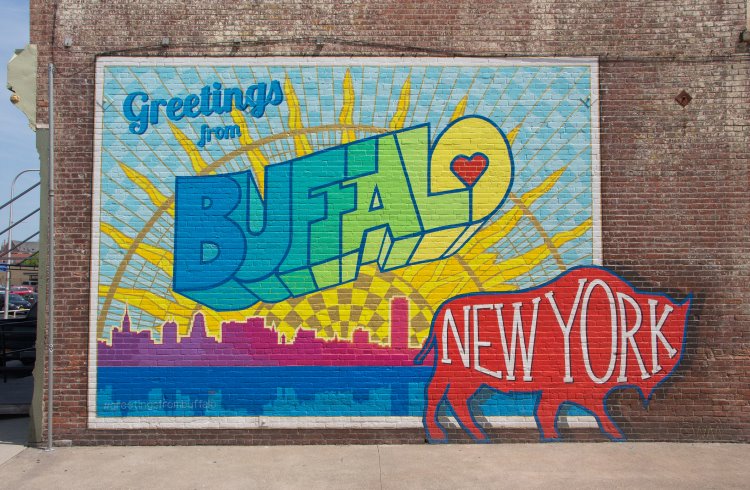
Birmingham, Alabama: Food, music, and magic
It’s generally understood that phoenixes rise from ashes and that any city enjoying a renaissance must once have had it tough. But what if the city brought the conflagration that reduced it to nothing on itself? That’s a question often asked of Birmingham, which during the civil rights period acquired the nickname “Bombingham” due to the campaign of terrorism waged by proponents of racial segregation. Between 1947 and 1965, more than 50 crimes involving explosives were recorded. Black community leaders were targeted, children killed and churches and houses destroyed – and the majority of those crimes went unsolved.
Birmingham’s approach to its history is to confront it head-on. It has wholeheartedly embraced its importance as a destination on the US Civil Rights Trial, which was launched last year and connects 110 sites of historical significance, chiefly across the South.
But Birmingham is more than a rueful memorial to its grisly past. Founded in 1871 as an iron, steel, and rail town, it grew quickly, earning the nickname “the Magic City”. Its recently rejuvenated downtown area, with its striking Art Deco and neo-gothic buildings, is a testimony to the good taste of that boom time.
Birmingham’s population had been steadily dropping until a decade ago, when it started to attract the advance guard of gentrification: musicians, artists, gourmands, and their pals in tech. To be fair to them, the transformation has been impressive. Pepper Place, the home of Alabama’s largest farmers’ market and the 19-acre Railroad Park, used to be a few blocks of gutted warehouses and tracks going nowhere. Avondale, a formerly unprepossessing district of car repair businesses, gas stations, and rust, is now a walkable neighborhood lined with brunch places, bars, and breweries, and once-subdued Forest Park is livelier for its independent stores, consignment shoppers, and generally bohemian air. Most of these neighborhoods are linked by greenways, which, come the weekend, are ablur with cyclists making use of America’s first electric bike-share program.
Almost equidistant between Memphis, the blues capital of the US, and Atlanta, hip-hop’s centre of gravity, Birmingham is becoming a hothouse for musical talent, with punk, Americana, and metal bands pulling in big audiences, and the number of performance venues quadrupling in under 10 years.
The ‘Ham has a growing food scene, too. It’s not for nothing that Zagat readers voted it the “number one up-and-coming food city” in a recent national survey. - Joe Furey

Los Angeles, California: A cutting-edge art scene
When I moved to Southern California 25 years ago, Downtown Los Angeles was run down – a dismal landscape of abandoned factories and deserted streets. But, in recent years, the neighborhood has undergone a seismic shift, with world-class art museums and trendy galleries and hotels transforming dilapidated industrial buildings into cutting-edge, creative spaces.
The Geffen Contemporary at MOCA exemplifies this transition. Once a police warehouse, it’s now home to 40,000ft2 (3,715m2) of exhibition space housed in a Frank Gehry-designed building.
Behind an intriguing honeycomb façade, The Broad houses a 2,000-piece contemporary art collection with works by Andy Warhol and Jeff Koons. And, in an effort to make art accessible to all, admission is free.
When I want to explore the underground scene, the Arts District’s many galleries are an incubator of experimentation. A former flour mill, Hauser & Wirth is now a contemporary art gallery that has preserved elements of its past, including the original motif of wheat sheaves. The gallery supports a range of emerging and established artists across various mediums, with a steady stream of rotating exhibits.
Like many transplants, I originally moved to Los Angeles to work in the film business. Cinephiles like myself flock to Downtown’s Ace Hotel, in the renovated United Artists building that once housed the production companies of movie greats such as Charlie Chaplin, for screenings at the now-restored Golden Age theatre.
Retail and restaurants are part of the urban renewal, too. Originally the LA Terminal Market, Row DTLA is now a shopping and culinary hub. I bring my appetite on Sundays, when Smorgasburg LA sets up shop at the Alameda Produce Market here. Dozens of vendors dish up everything from vegan donuts to juicy porchetta. If craft beer is your beverage of choice, Arts District Brewing Company’s 15-barrel brewhouse is the place to be.
And, thanks to vast improvements in Downtown’s public transportation links, it’s possible to avoid the city’s infamous traffic and explore car-free via pedestrian-friendly streets, the Metro, and bike and electric scooter shares. - Allison Tibaldi
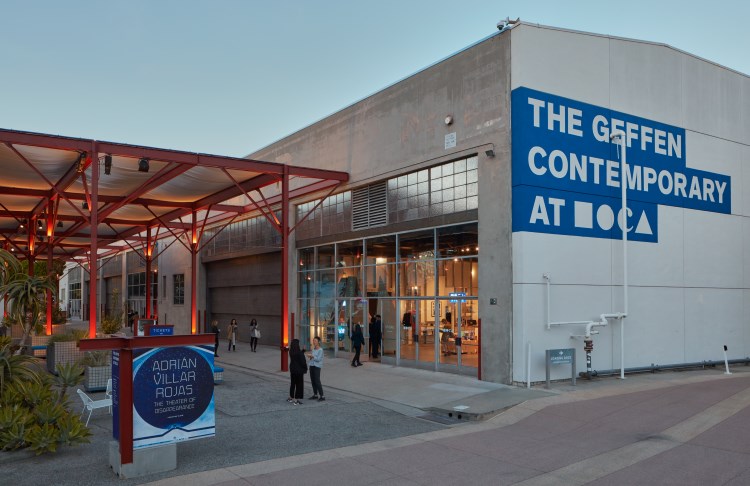
Providence, Rhode Island: Walkable and affordable
Providence is a small city by any measure, at just 20.5mi2 (53km2) and home to 180,000 people. But, without a doubt, it’s also one of the most underappreciated cities in America.
I might be a little biased. I grew up in Pawtucket, literal steps from the Providence city line. And, of course, it’s often easier to love a place once you’ve left it. It’s been 10 years since I’ve lived there. But every time I visit, it just gets better.
Thanks in part to an esteemed culinary arts school, Johnson & Wales, and edgy art students at the Rhode Island School of Design, you’ll find top restaurants gaining international recognition, hipster doughnut shops with cult followings, and multi-story murals cascading down the city’s most historic buildings. Providence has been slower to grow than other cities of its size, and its affordability has fueled small businesses – you won’t see many chains downtown.
I love walking up College Hill, one of the state’s best-preserved colonial-era neighborhoods, to sit in Prospect Terrace Park, overlooking the city for sunrise and sunset. I love tip-toeing to the second floor of the Providence Athenaeum, perhaps the most photogenic library in the US, to write at an ancient desk sandwiched between stacks of old books. I love grabbing a frozen Del’s lemonade – watermelon, of course – and clambering for a front-row view of WaterFire, an art installation of bonfires on the Providence River that has enchanted the city on special nights since 1994. And I love that it’s possible to stay at a sub-US $100 boutique hotel room in a renovated former brothel, within walking distance of Broadway shows on tour at the Providence Performing Arts Center.
Sure, Providence is home, and so it will always have my heart. But if you’re not careful, it’ll easily snag yours, too. - Kassondra Cloos
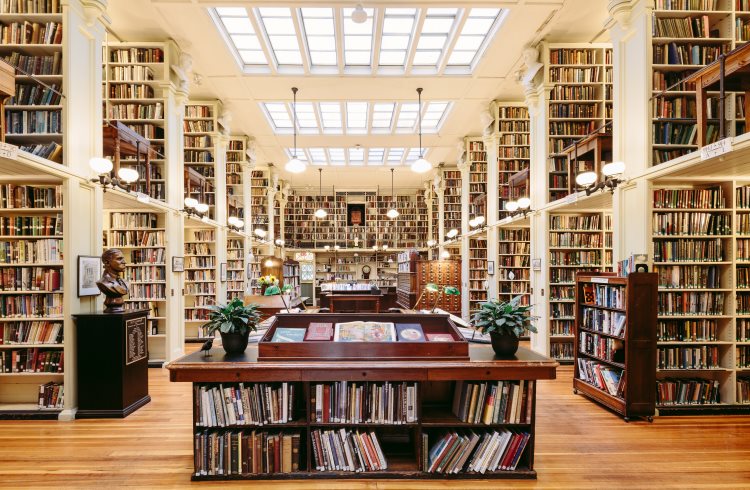
Oklahoma City, Oklahoma: From blighted to hip
“Where do you want to eat?” my friend asked me, both of us ravenous and still full of adrenaline from an afternoon of whitewater rafting in downtown Oklahoma City. We had conquered the Class II to IV raging water at RIVERSPORT Rapids, one of the only man-made urban rafting centers in the nation, and we were ready for a cold drink and a hearty meal.
Whenever someone asks me where to eat in Oklahoma City, I groan a little inside. Not because I can’t think of a decent place to eat, but because there are so many choices, from traditional Vietnamese in the Asian District to award-winning restaurants in Midtown.
Not so long ago, OKC was considered a fly-over location, with a ghost-town downtown and sad nightlife. In the 1980s and early 1990s, college co-eds like me didn't go downtown at night. Besides the fact the city “rolled up the sidewalks” at 5pm, the area was shady and ominous in its emptiness – a far cry from the hopping, brightly-lit vibe that it has today.
But combine a rabid love of public art, a ripping music and performance scene, a new public streetcar system, an NBA team, and districts that get hipper every day, and OKC is being called the new “Austin of the Plains.”
A massive, highly-anticipated urban park now under construction will bridge OKC's quickly regenerating downtown to the Oklahoma River. Nearby, the old warehouse district of Bricktown, which has been described as a miniature version of San Antonio's famous Riverwalk, continues to add more nightlife and entertainment options.
OKC’s renaissance wasn’t by accident, though. After the April 19, 1995 bombing of the Alfred P. Murrah Federal Building that claimed 168 lives, the city and its citizens refused to be defined by tragedy. With an upswelling of pride and a crusade to heal itself, the citizens and leaders came together to create a downtown that mirrored the indefatigable spirit of Oklahomans. - Heide Brandes
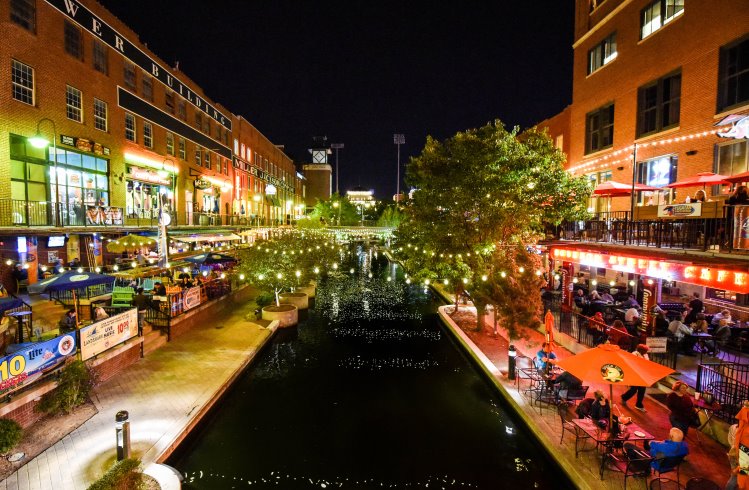
Pittsburgh, Pennsylvania: "Steel City" reborn
Pittsburgh exists in the popular imagination as one of the “Rust Belt” cities that, along with Cleveland, Detroit, and Buffalo, were left for scrap after the industries that made their names closed for business. But while it’s true “the Steel City” did lose its way for a spell, it swiftly rebuilt its fortune on robotics, biomedical engineering, and self-driving tech, drawing on graduates from Pittsburgh, Carnegie Mellon and Duquesne universities.
Built at the confluence of the Allegheny, Monongahela and Ohio rivers, the City of Bridges (Pittsburgh has multiple names, and 446 bridges at last count), is defined by water. In this respect, it reminds me of a shrunken, hillier, vista-peppered Chicago, with which it shares deep blue-collar roots.
On the south bank of the Allegheny, where mills once choked the city with smoke, the Strip District looks like a textbook illustration of a miraculous recovery. Just northeast of Downtown’s museums, galleries, and theaters, its warehouses and factory buildings now house dive bars, art studios, craft workshops, Polish delis, the Heinz History Center, a whiskey distillery and “Robotics Row”, an area where a string of tech companies have set up shop.
Pittsburghers – or Yinz – are fiercely loyal to their city. And the city celebrates them back. Its heroes come in various forms, many of them athletic. Game days are hectic – the streets are flooded with black and gold, the colors of its three professional sporting franchises – but brain is as revered as brawn in the ‘Burgh, so long as it’s from there, and its cultural life is rich and diverse.
See for yourself at these Northside neighbors: Randyland, Randy Gibson’s bemuralled house containing his own outsider creations; The Mattress Factory, a showcase of installation art; and City of Asylum, a non-profit organization that provides sanctuary for refugee writers who are under threat of persecution. The Andy Warhol Museum, the largest museum dedicated to a single artist in the country, is marvelous, a fitting shrine to the modern era’s greatest iconographer, iconolater, and iconoclast. Special mention must also go to the August Wilson Cultural Center, a multi-purpose venue that’s a leading promoter of African-American arts.
As befits a place of punishing inclines, Pittsburgh has two funicular railways, though having eaten my way around the city I can tell you walking it off is the only proper response to dining there. Don’t get me wrong, its restaurant scene is thoroughly modern, with southeast Asian and Chinese influences, but its light bites tend toward the hulking: the Big Mac (which was invented in the kitchen of a Pittsburgh McDonald’s); prune butter and cottage cheese pierogies; and the Primanti Bros sandwich of sliced meats and cheese, coleslaw and, yes, French fries on Italian bread. - Joe Furey
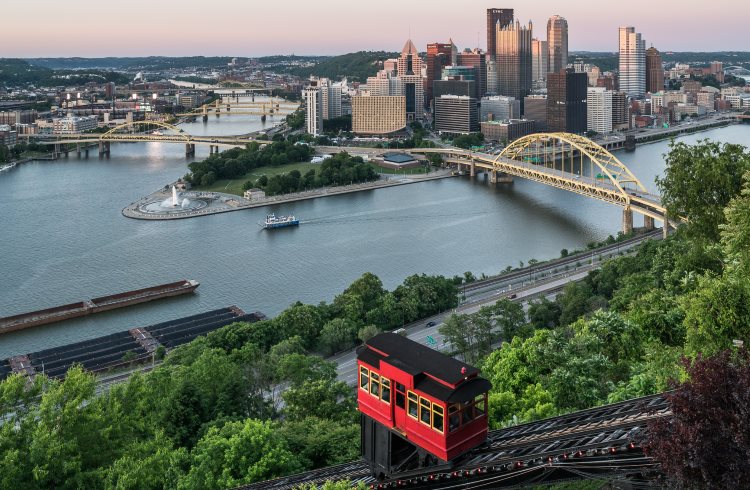
Related articles
Simple and flexible travel insurance
You can buy at home or while traveling, and claim online from anywhere in the world. With 150+ adventure activities covered and 24/7 emergency assistance.
Get a quote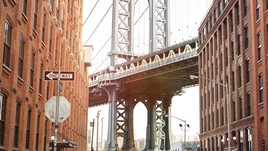
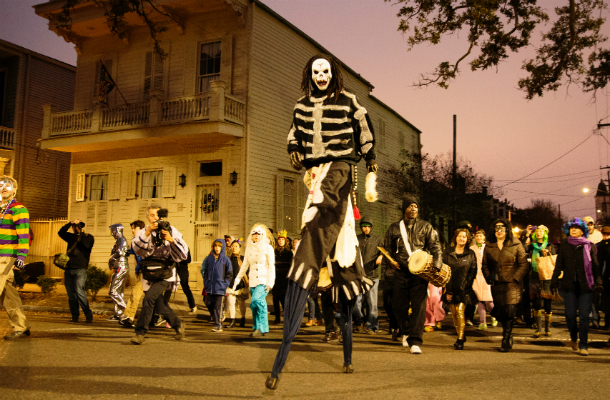
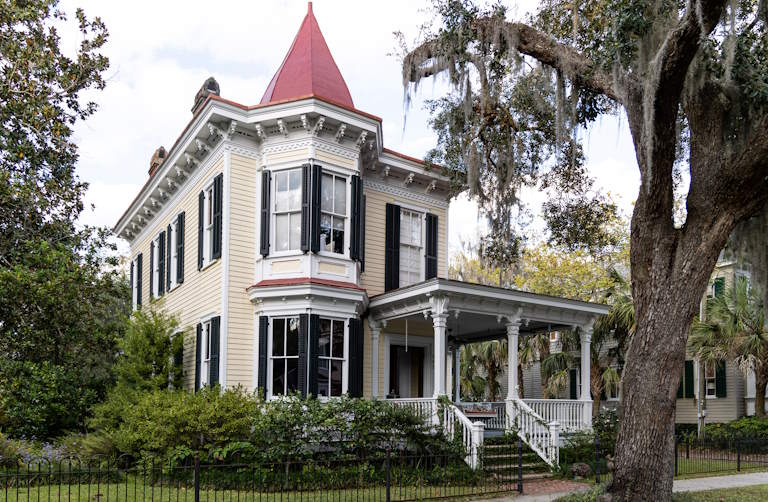
No Comments